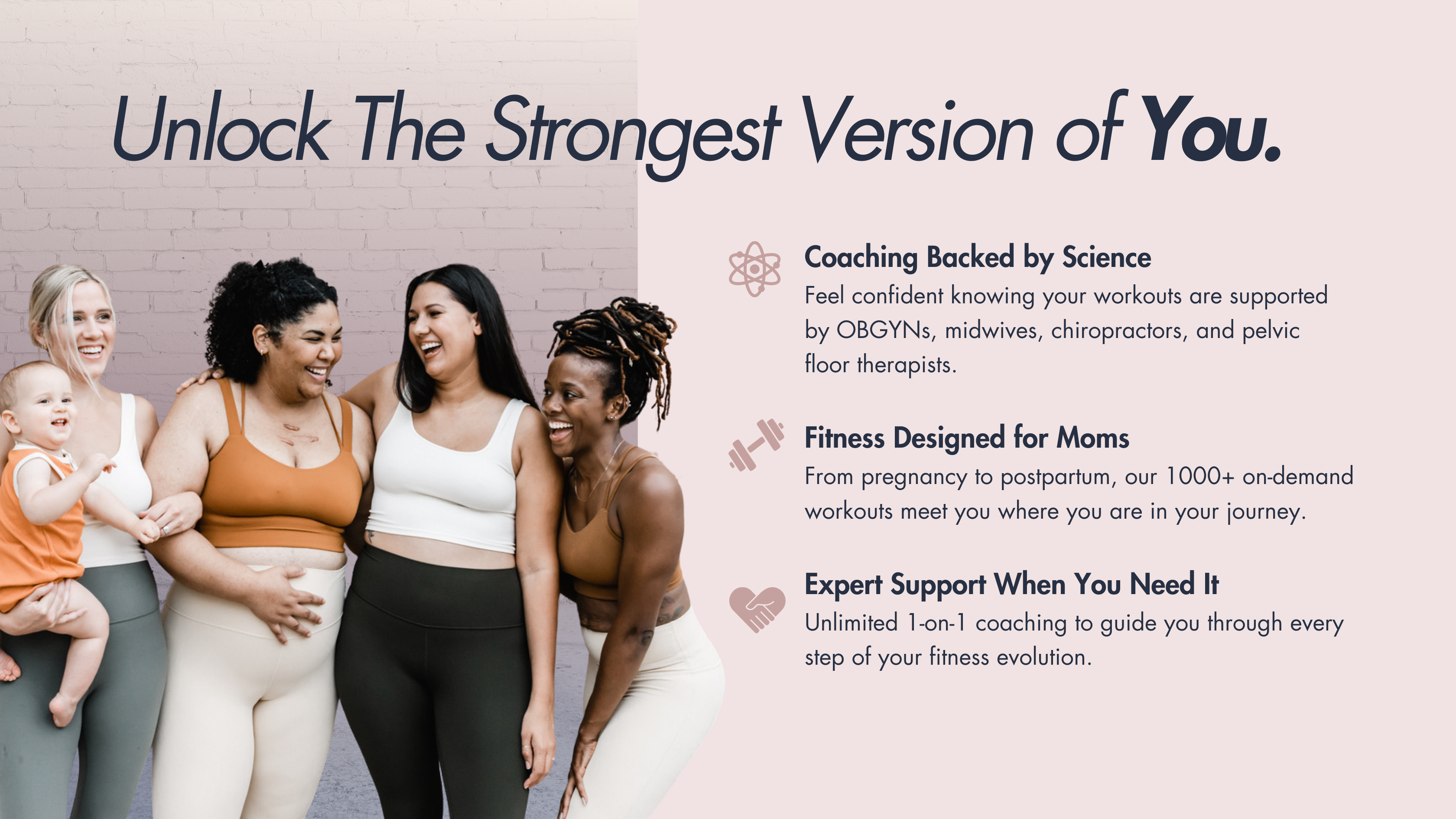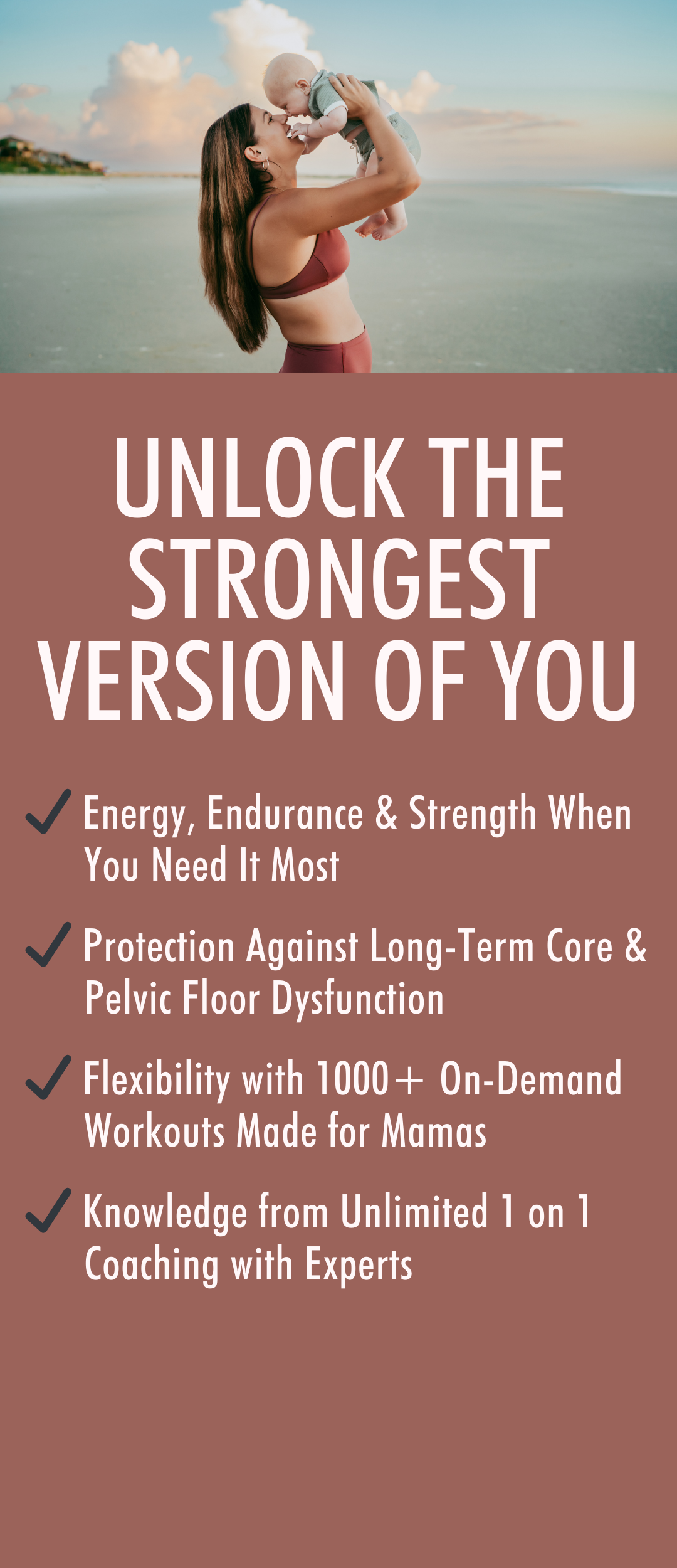5 Common Mistakes When Exercising During Pregnancy
Don’t make these mistakes while exercising during pregnancy
Shifting the way we move during pregnancy can make all the difference in maintaining a fit pregnancy while avoiding many of the injuries that some of us fear. It's common for most women to continue doing what they've always done to stay active but are they allowing for the modifications needed? We want to break it down for you in an easy to understand and implement way. As you embrace your pregnancy and active lifestyle, make sure you steer clear of these common mistakes throughout your journey.

Not staying connected to the core unit
Not implementing diaphragmatic Breath
Correct breathing should be a staple for everyone but when pregnant there are several other elements of importance involved. Did you know that breathing diaphragmatically provides the following benefits:
-
More oxygen delivered to baby & mom with each inhale
-
Regulation of Intra-abdominal pressure which lessens your chance of common pregnancy injuries
-
Tones the inner core system to provide optimal functional of the core musculature
-
Prepares the body for labor & birth
-
Increases the ability to spend time in a more parasympathetic state [yummy for mom + baby]
-
Creates ultimate balance of the pelvic floor muscles
Simply applying this breathing technique will prove to provide endless benefits for both mom and baby, plus it’s a MUST for all postnatal mamas wanting to regain core strength and function.

Not incorporating the "lift and wrap" with functional movements throughout the day
We move more throughout our day more than we ever move in a workout class. To truly get the results we desire, we must begin to mirror what we’re teaching our muscles during an exercise to how we use them during an every-day, functional movement. As the body changes throughout pregnancy so does the way our body responds to daily movements. What once felt easy, can now feel challenging and somewhat exhausting. Being able to co-contract our core + pelvic floor activations with other movements that we perform will allow you the ability to challenge your muscles, functionally in everything you do.
Did you know that simple actions and movements such as laughing, coughing, and loading the spine when reclining onto or getting off the couch have a huge effect on your core?
These simple actions and movements cause the pressure in our abdomen to increase, therefore requiring a co-contraction of the pelvic floor and TVA to "brace" or simply put, help regulate the pressure increase. This repetitive pressure increase, when allowing the pressure to push outward and downward on the core and PF, [not bracing] can cause a ton of core weakness and lead to extreme core dysfunction. Are you aware that allowing the core to fire incorrectly in movements like these can increase your chance of pelvic floor incontinence, diastasis recti [abdominal separation] and other pregnancy-related injuries? Re-patterning our daily movements that affect the core and other muscles being used is a crucial component of both pre & postnatal exercise. When we move smart, we see results much quicker and lessen the degree of pregnancy-related injuries.
Choosing the wrong exercises during workouts
This one can be tough as we know how important it is to continue doing what you love throughout your pregnancy. That’s why The Bloom Method’s innovative system can keep you doing exactly what you’ve always done but with the ease of knowing that you aren’t hurting yourself or increasing your chance of pregnancy-related injuries. Motherhood is on the brink and you’ve got much bigger agendas on your plate than to worry about spending months healing your body due to exercising incorrectly.
As a general rule, I tell women to avoid the following post 15-22 weeks pregnant:
-
Crunches
-
Sit-ups [unless it’s functional like getting on and off the couch]
-
Frontal Planks
-
Plyo style movements
-
Jumping exercises [protect your pelvic floor]
-
Strict or un-supported pull-ups
-
Lifting weights over 85 lbs.
There are so many things you CAN do so don’t stress about the modifications and let the new techniques teach you things you never thought you could learn. Carrying around up to 25+ extra lbs. as you exercise can build more strength than you realize while helping you train for your birth marathon!
Learn more about training for birth here!

Waiting until getting pregnant to begin specific techniques to prepare the body for pregnancy
We often find that women don’t begin implementing new techniques, or even thinking about pregnancy exercise until they are in their second trimester. While choosing to exercise at any point is fantastic, the more you can prepare your body for the changes it’s about to experience, the better results you can expect to experience both during and post pregnancy. I typically recommend that women start adding in our core techniques as early as 6 weeks before getting pregnant, so when you start trying, think about training your core for what it’s about to endure. The stronger your core is going into a pregnancy, the stronger it will remain and the more connected to it you will feel within a few short weeks post birth.
Muscle memory is your best friend during pregnancy so pressing the start button with a strong connection to these muscles will allow the memory to support you in the days following your birth. Don’t wait until your bump has made an appearance to start implementing smart techniques — do it now! This will make your journey into motherhood that much easier.
Pregnancy exercise doesn't have to be restrictive, it doesn't have to be complicated and we most definitely don't want you over-thinking things! Enjoy this time and trust that implementing new tools and forms of movement will only support you, in the long run, helping you to expand your mind and the way you connect to your body during all movement





